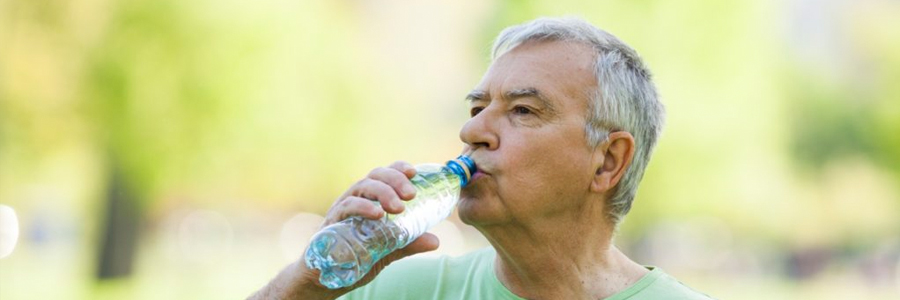Keep kidney stones away by drinking plenty of water


Written by Dr. Amul Bhalodi, a physician at UK Urology.
Each year, more than a million people in the U.S. will seek treatment for mild to severe pain caused by a kidney stone. Overall, one in 11 individuals in the U.S. will be affected by kidney stones at some time in their life.
Kidney stones are often caused by dehydration. Not surprisingly, that means we see an uptick in cases during this time of year, when the weather is hotter and the risk of dehydration increases.
What are kidney stones?
Kidney stones are hard, pebble-like pieces of material that form in one or both kidneys when your urine contains more crystal-forming substances – such as calcium, oxalate and uric acid – than the fluid in your urine can dilute. In addition, your urine may lack substances that prevent particles from sticking together, creating an ideal environment for kidney stones to form.
Kidney stones can vary in size from tiny crystals that can only be seen with a microscope to stones more than an inch wide. Tiny stones may pass without you even noticing but can be extremely painful. Stones of any size can become stuck in the urinary tract causing swelling of the kidney and severe pain in the abdomen or lower back.
How can you prevent kidney stones?
The most effective way to prevent kidney stones from forming is to drink plenty of water. Dehydration is one of the most common causes of kidney stones. When we are dehydrated, urine is too concentrated and minerals can build up and form stones.
In fact, during the warmer or hotter times of the year, you’re at greatest risk of becoming dehydrated. That’s why it’s important to drink more water than you usually drink during the cooler times of the year.
Kidney stones can form at any age, but they usually appear in people between 40 and 60 years old. Of those who develop one stone, half will develop at least one more in the future.
Common symptoms
Symptoms may not appear until the stone moves around within the kidney or passes into the ureter – the tube connecting the kidney and bladder. The most common signs and symptoms are:
- Severe pain in the side and back, below the ribs.
- Pain that radiates to the lower abdomen and groin.
- Pain that comes in waves and fluctuates in intensity.
- Pain during urination.
- Pink, red or brown urine.
- Cloudy or foul-smelling urine.
- Nausea and vomiting.
- Persistent need to urinate.
- Urinating more often than usual.
- Fever and chills if an infection is present.
- Urinating small amounts.
If you have these signs or symptoms, seek medical attention. Treatment depends on the stone’s size and location. A CT scan or X-ray can help pinpoint the location and estimate the size of a kidney stone.
Depending on what your doctor finds, you may be prescribed medicine and advised to drink lots of fluid. Or, you might need a procedure to break up or remove the kidney stone.
So, as you head outside this summer, remember to hydrate!




